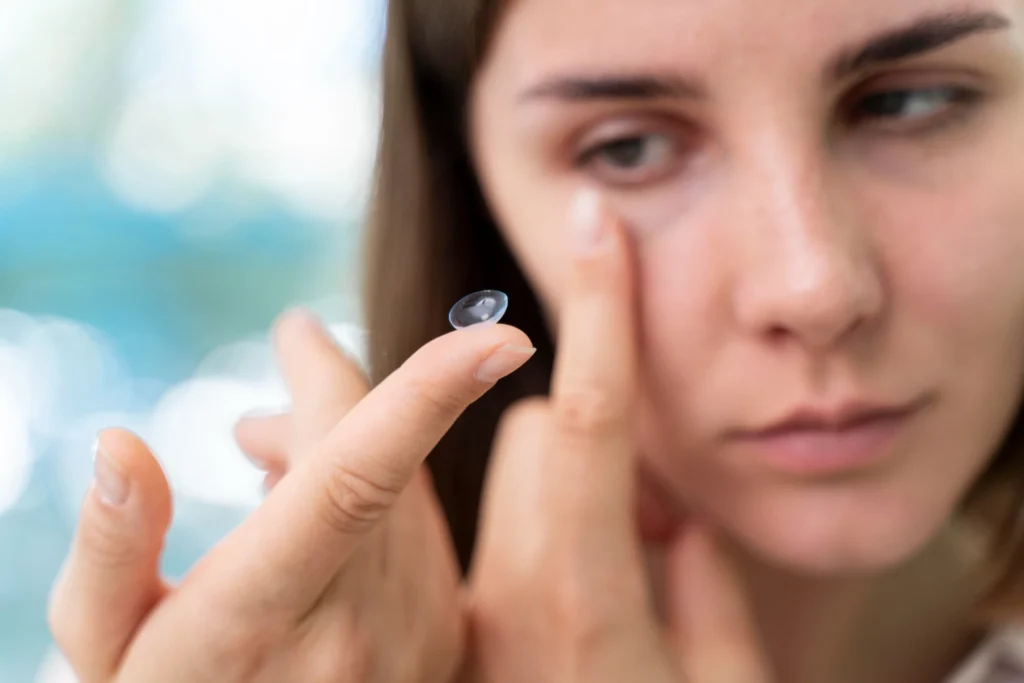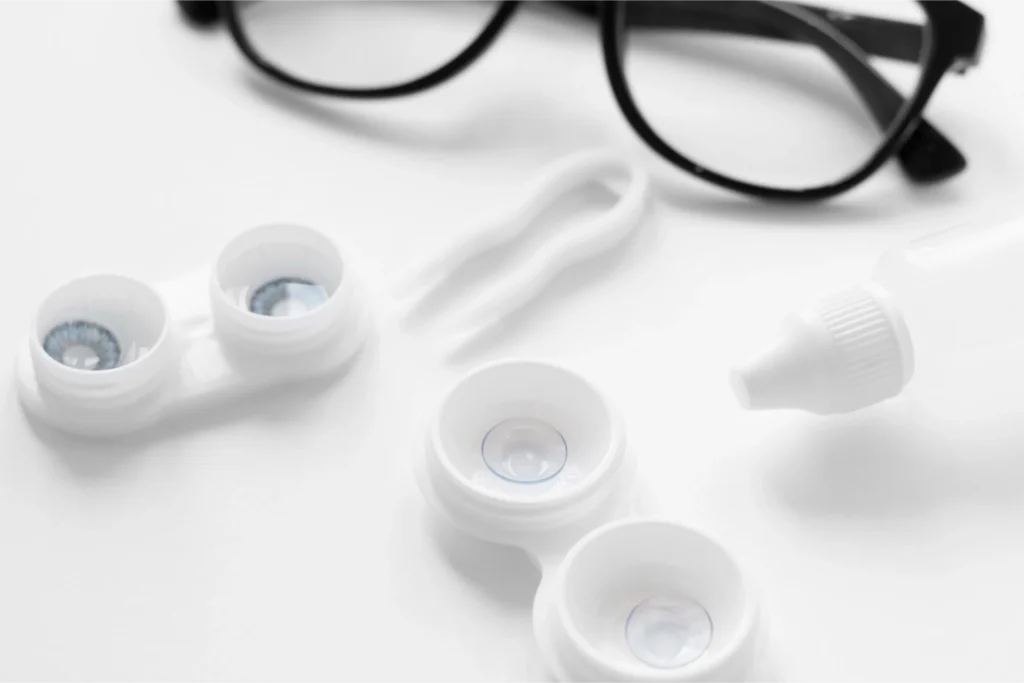Contact lenses are known to be a convenient and comfortable alternative to eyeglasses. They are a life changer for people who have eye-sight issues and don’t like wearing glasses all the time.
However, there are various problems related to contact lenses. If you don’t take care of them properly, your eyes can be infected.
According to research, people who wear contact lenses have a higher chance of developing keratitis, corneal ulcers, pinkeye, and some other eye infections.
Symptoms of Eye Infections:
The types of eye infections can be distinguished by the kind of symptoms they present and the severity of them.
Symptoms of eye infections may not manifest in the same way. It’s important to spot potential signs and seek quick medical help if you have any of the following:
Redness
A major symptom of eye infections is the redness of the affected eye or eyes. The eyes being pink or red means the person has inflammation and irritation.
Pain or Discomfort:
The eye infections often lead to pain; the levels of pain may vary from minor irritation to severe pain.
This will be accompanied by a sense of irritation, which is either a burning or itching feeling in the eye.
Blurry Vision:
The part of the eye with swelling or corneal damage related to infections can also cause blurred vision. It can be intermittent or constant, depending on the cause of the vision loss.
Sensitivity to Light (Photophobia):
Various diseases can increase the discomfort of bright light. Discomfort can be increased by photophobia, and this can lead to an inability to perform everyday routine activities.
Excessive Tearing:
Eye infections can cause your eyes to excrete excessive tears in order to remove some irritants or germs. Soreness, redness, and a lot of tears (excessive tearing) are all symptoms of epiphora.
Understanding the Risks of Contact Lenses

Daily wear, inadequate care, and exposure to pollutants may contribute to a higher risk of infection with lenses.
Microbial Keratitis:
Microbial keratitis is a common source of blindness, which is the most severe type of corneal infection, mainly bacterial, fungal, or amoebic.
Symptoms include eye redness, pain, vision impairment, light sensitivity, and more frequent irritating tears.
Bacterial infection of the cornea, caused by bacterial overgrowth, may lead to the death of the optic nerve and eventually complete loss of vision.
Those wearing eyeglasses and who are not keen to wash their lenses in the right way, might be at higher risk of getting microbial keratitis.
Corneal Ulcers:
A corneal ulcer is an erosion or a sore on the surface of the cornea. They are consequent upon an organism being infected by bacteria, viruses, or a microorganism.
Contact lens users neglect their hygiene, which may result in infected lenses, and eventually, they may develop a corneal ulcer.
Conjunctivitis:
Conjunctivitis, or pink eye, is a condition that causes conjunction of the layer covering the eye. This causes the eye to be swollen and red.
Contact lens wearers belong to the group of people who are highly susceptible to viral and bacterial conjunctivitis. The risk gets enhanced if the correct lens care is not observed and the lenses are worn for a longer period.
Use and take care of the contact lenses well. Not only will this help you remain healthy, but it will also keep infections at bay. Here are some essential tips to keep in mind
Preventive Measures
- Wash your hands with soap and water before putting on the contact lenses.
- Use a lint-free towel, in case your glasses have some residual water in them, to prevent any strays of fibers or lint from your glasses.
- It is advisable to change your contact lenses on time. Your ophthalmologist will inform you of the specific time frame in which you should be using them, whether it is daily, every two weeks, or once a month.
- Store lenses properly. Ensure that the devices are put in a disinfected case when they are not in use. In a way, don’t forget to change your contact lens case every three months to avoid breeding bacteria.
Debunking Myths Related to Contact Lenses
Lenses are Difficult to Adapt to:
Developments in contact lens technology have resulted in more comfortable and breathable lenses, which are capable of keeping the eyes moistened.
Many people find out that wearing soft lenses is not only comfortable but also easy to carry throughout the day after they have properly selected their prescription and cleaned them.
Contact lenses may engage in eye infections as well:
The only thing that contact lenses do is increase the likelihood of eye infections, but only if they are not cared for properly.
One of the ways of infecting disease is through poor care of the lenses. Proper hygiene reduces the spread of infectious diseases.
Follow the guidance of your optometrist very attentively for the best outcome.
Don’t Take them out before hitting the pool or the shower:
Water may contain some microbes that are likely to infect your eyes. It is important to take out your lenses prior to swimming or showering.
You should remove your lenses whenever you go to swim or bath to avoid that risk.
Takeaway
There are various risks associated with the use of contact lenses. However, if you take effective precautions, then the lenses won’t cause any problems for your eyes. Vision Gallery provides the best contact lenses.
If you need contact lenses for yourself, then contact us today. We provide high-quality contact lenses that minimize the risk of any eye infections.






